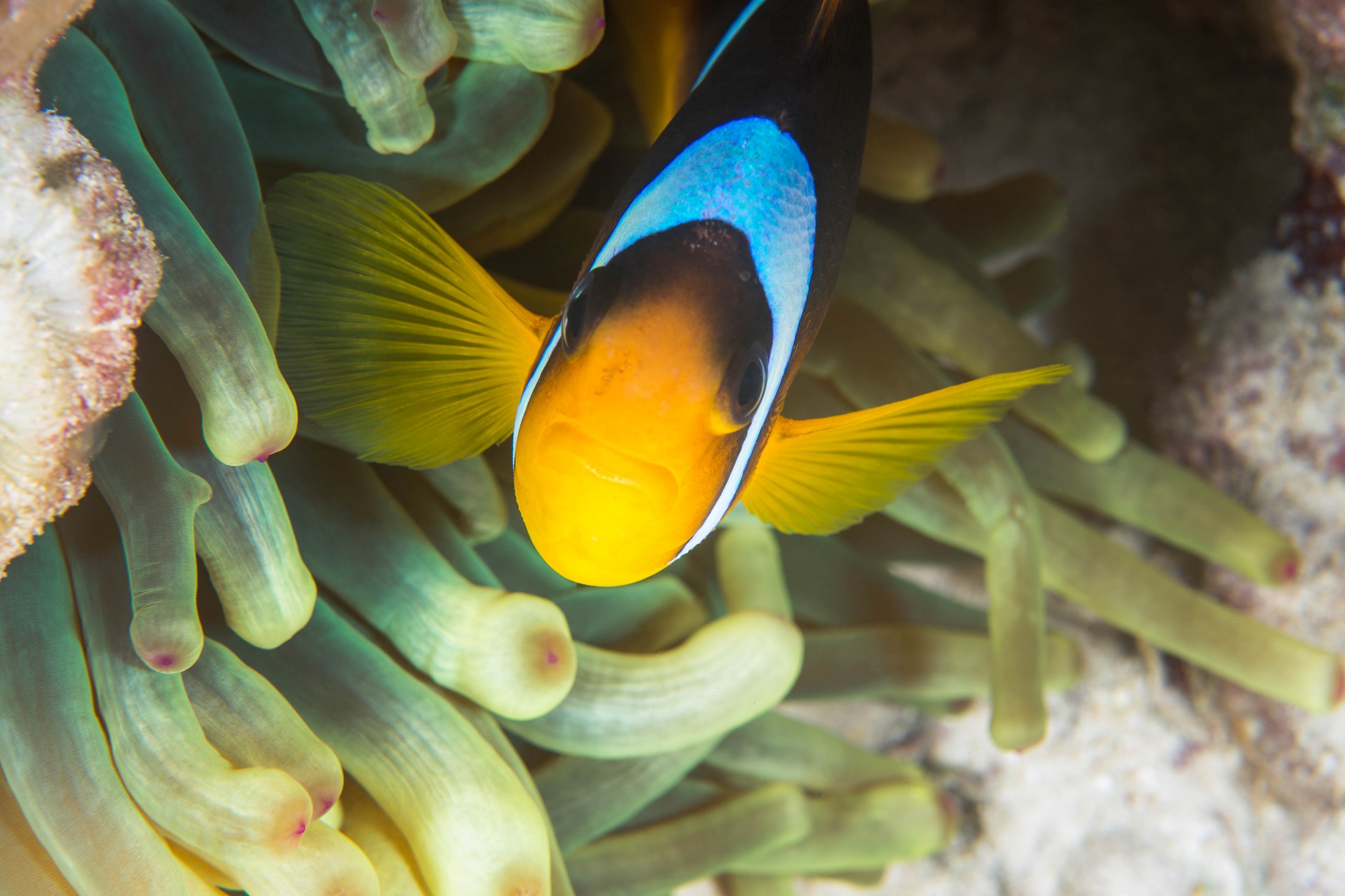
Clownfish or anemonefish (Amphiprioninae) are extremely popular, having been made famous from Disney Pixar’s Finding Nemo (2003) and Finding Dory (2016). They were already one of the most popular species found in home aquaria but demand rocketed following the release of the first film.
There are actually around 30 different species of clownfish, and Amphiprioninae is the family name for this group of species. They are known for their bright orange and white striped body (hence the name ‘clown’) however, they are also found in black and white, while others are dark orange with few or no stripes. Their colours depend on where they live. Clownfish are tropical fish, preferring the warm waters in the Indian Ocean, the Red Sea, and the western Pacific. They typically live at the bottom of shallows and in coral reefs.
Clownfish are omnivores, eating zooplankton and algae, worms and small crustaceans. They are known for two interesting features, one being their hierarchical sex change and the second being their incredible relationship with anemones.
Hierarchical sex change:
There is only one breeding pair within a group, with one female and one large dominant male. Every clownfish is born as a juvenile male and will remain that way until they are required to set up within their hierarchy. If the one and only female dies, the large dominant male will transform into the next female and the largest juvenile male will grow to become the next large, dominant male. This makes the clownfish sequential hermaphrodites.
The one and only female will lay hundreds, if not thousands of eggs and the dominant male will protect them until the hatch 6-10 days later.
Relationship with anemone:
One mating pair will live within the protection of a stinging anemone. This is a mutually beneficial relationship, where the clownfish and anemone protect the another from predators, and in the case of the anemone its parasites too. It is thought that the mucus on the clownfish protects it from the sting of the anemone. They also provide one another with a food sauce, with the anemone digesting the clownfish excrement and clownfish eating dead tentacles.
Type
Fish
What do they eat?
Zooplankton, algae, worms and small crustaceans
Size
Up to 11cm
Water Type
Tropical Marine
Where are we?
Indian Ocean, the Red Sea, and the western Pacific
